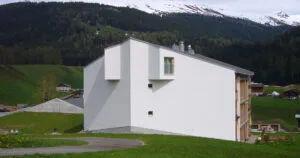Matteo Tempestini
Abstract/Description
To maintain the delicate balance of the Alpine environment, the development of a sustainable built environment is essential. Over the last thirty years, some Alpine regions have included architecture and the quality of the built environment at the heart of their policies. Among these, two regions in the Central Alps, Graubünden in Switzerland and Vorarlberg in Austria, stand out for their active promotion of a conscious and widespread building culture, not only among professionals and experts in the field, but also among the general public. The aim of this paper is to provide an overview of these policies and the cultural initiatives implemented by the two regions from the end of the last century to the present day. These initiatives include architecture awards, exhibitions, various publications and the establishment of institutions dedicated to the promotion and communication of architectural culture, such as the Bündner Heimatschutz in Graubünden and the Vorarlberger Architektur Institut in Vorarlberg. In addition, through the description of distinctive architectural case studies, the paper will show how this widespread Baukultur has contributed to an increased awareness among the population of both regions of the environmental impact of construction. It will explore how this awareness has fostered a greater commitment to sustainability. By examining these paradigmatic examples of Alpine architecture, the paper seeks to understand how different tools for promoting and critiquing architectural projects – through their narratives and historiographies – can influence the development of a specific architectural culture and contribute to the creation of high quality, thoughtful architecture.


